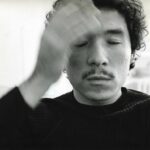Past Event
Visual AIDS Talk + Tour: Antonio Lopez Show with Rocío Aranda-Alvarado, Paul Caranicas, Alex Fialho
El Museo Del Barrio



































Visual AIDS and El Museo Del Barrio hosted a guided tour and talk of ANTONIO LOPEZ: Future Funk Fashion with the exhibition's co-curator Rocío Aranda-Alvarado and artist and executor of the Estate of Antonio Lopez & Juan Ramos, Paul Caranicas, moderated by Alex Fialho, Programs Director at Visual AIDS.
ABOUT THE EXHIBITION
"ANTONIO LOPEZ: Future Funk Fashion," explored the life and legacy of the late, famed fashion illustrator and Visual AIDS Artist+ Member Antonio Lopez, and his creative partner Juan Ramos, who worked in New York and Paris throughout the late 1960s, 70s and early 80s.
ABOUT THE PRESENTERS
Rocío Aranda-Alvarado is Curator at El Museo Del Barrio where she is working on A Brief History of (Some) Things, an exhibition exploring the persistence of Mesoamerican and Indigenous Caribbean imagery in contemporary Latino art. She recently organized MUSEUM STARTER KIT: Open With Care, celebrating the 45th anniversary of El Museo, and LA BIENAL 2013, El Museo’s biennial of emerging artists, as well as the permanent collection exhibition for 2013–14. She is the former curator of the Jersey City Museum. Ms. Aranda-Alvarado is also on the adjunct faculty of the Art Department at the City College of New York, where her writing has appeared in various publications. Born in Santiago, Chile, she received degrees in Art History from Univ. of Maryland, Tulane University and the Graduate Center of the City University of New York. Her curatorial work and research focuses on modern and contemporary art of the Americas.
Paul Caranicas is executor of the Estate of Antonio Lopez & Juan Ramos. He is the author of Antonio’s People on Antonio Lopez' art, and is an artist and free-lance curator based in New York City. Caranicas was Juan Ramos’ partner from 1971 until Ramos’ death from AIDS in 1995. A graduate of Georgetown University, The Corcoran School of Art and the Ecole des Beaux-Arts, Caranicas is known for his realist paintings and drawings of architecture often depicted against a marginal landscape. Working in conceptual series, he is fundamentally an “ecological artist,” painting the wastes of capitalism, such as abandoned WWII bunkers, steel military structures, and storage facilities. Usually stationed against a body of water or outlining a limpid sky, these structures have political and intellectual as well as aesthetic implications, referencing the dangerous side of utopianism and its erosion of the natural world. Caranicas has had over twenty solo exhibits in galleries in the US and Europe, and is in the permanent collections of The Smithsonian American Art Museum, the Art Institute of Chicago and Yale University Art Gallery.
Alex Fialho, Programs Director at Visual AIDS, has facilitated projects and conversations around both the history and immediacy of the HIV/AIDS epidemic, utilizing art to maintain HIV/AIDS visibility, consider its legacy, and galvanize contemporary response. He has presented his research on the art of Glenn Ligon and Keith Haring at the College Art Association and NYU Fales Library. His extensive oral history interviews with Gregg Bordowitz, Ron Athey, Carrie Yamaoka and Marguerite Van Cook will be part of the Smithsonian Archives of American Art's forthcoming "Visual Arts and the AIDS Epidemic Oral History Project." He also curates exhibitions for Lower Manhattan Cultural Council as Research and Curatorial Associate, and is a frequent contributor to Artforum.com and Artforum International Magazine.
ABOUT EL MUSEO
El Museo del Barrio presents and preserves the art and culture of Puerto Ricans and all Latin Americans in the United States. Through its extensive collections, varied exhibitions and publications, bilingual public programs, educational activities, festivals and special events, El Museo educates its diverse public in the richness of Caribbean and Latin American arts and cultural history. By introducing young people to this cultural heritage, El Museo is creating the next generation of museum-goers, while satisfying the growing interest in Caribbean and Latin American art of a broad national and international audience.
